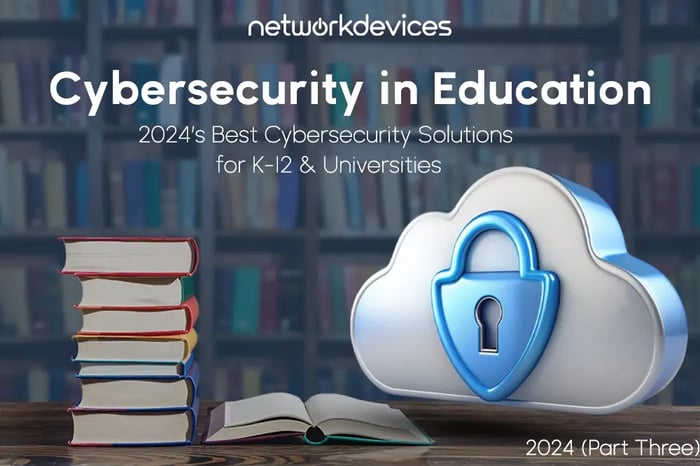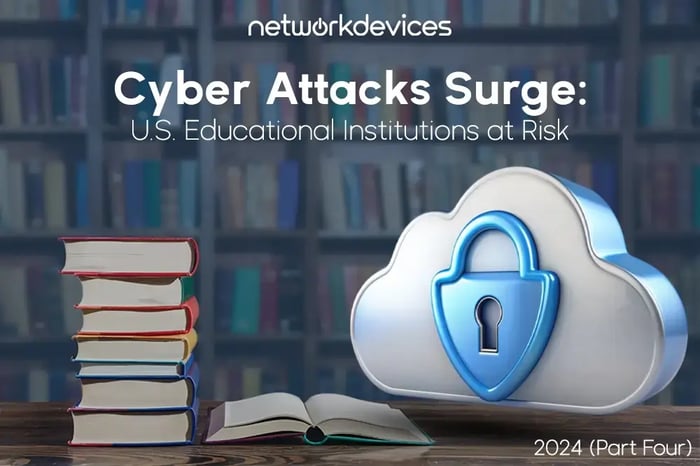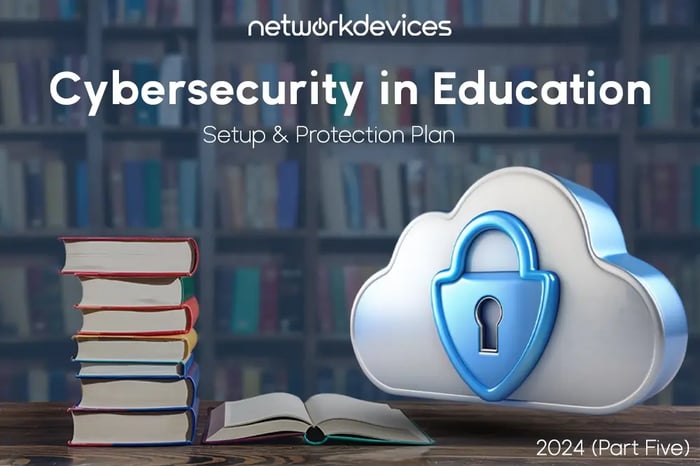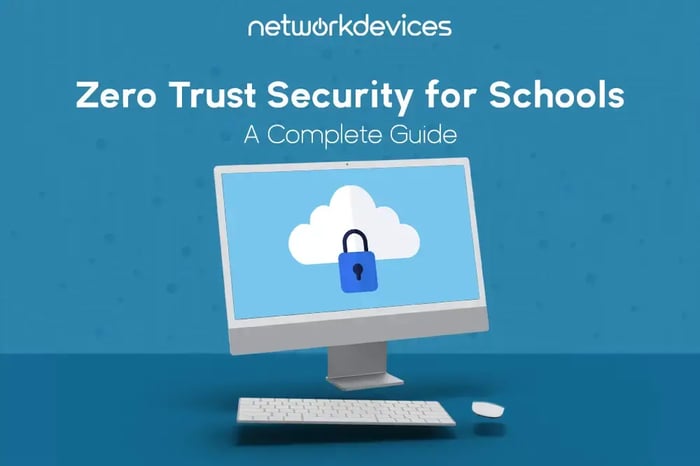You have no items in your shopping cart.

2024’s Best Cybersecurity Solutions for K-12 & Universities
Cybersecurity in education is crucial for 2024, especially with the rise of hybrid learning and digital transformation. Educational institutions must address the growing cyber threats in education and implement robust cybersecurity solutions for education to protect student data and institutional networks. Learn how Next-Gen Firewalls (NGFW) can significantly improve your organization's cybersecurity posture.
Today, we will discuss in detail the top five must-have cybersecurity solutions in education and how these solutions can prevent data breaches.
The Cybersecurity Landscape in Education: Key Statistics and Trends
- Educational institutions must prioritize a layered security approach that ensures defense in depth across all digital assets. This ensures that proper security measures and solutions are implemented at various network and system layers.
- NGFW, endpoint security, MFA, VPN, and WAF will be the must-have solutions for the educational sector in 2024.
- A recent cybersecurity report by Sophos highlighted that ransomware attacks impacted 79% of higher education institutions in 2023, a significant increase from 64% in 2022.
- A new report from the Cybersecurity and Infrastructure Security Agency (CISA) provides critical guidance for schools to mitigate the threat of a cyber catastrophe.
- IBM in its report Cost of a Data Breach In 2023, highlighted that the data breaches cost higher education and training organizations an average of $3.7 million.
- According to higher education experts, the 2024 Educause Horizon Report advises that colleges and universities should explore applications for AI-enabled technologies and foster AI fluency among students and staff.
Securing the Future: Cybersecurity in Education
In the context of higher education cybersecurity and K-12 cybersecurity, protecting critical assets such as student records, faculty data, and institutional networks is paramount.
Implementing robust cybersecurity solutions like encryption, Multi-Factor Authentication (MFA), and continuous monitoring helps defend against data breaches, ransomware attacks in education, and unauthorized access.
These cybersecurity best practices for schools ensure the integrity and confidentiality of educational information, supporting a secure and resilient learning environment.
The Top Five Cybersecurity Solutions:
1. Next-Generation Firewall (NGFW)
NGFWs go beyond traditional firewalls by incorporating advanced features such as deep packet inspection, intrusion prevention systems (IPS), and application awareness. They provide a robust defense against modern cyber threats by monitoring traffic at the application level and detecting sophisticated attack vectors.
Enhancement: NGFWs help educational institutions protect their networks from external threats and ensure secure access to educational resources, even in complex hybrid learning environments. They also help enforce security policies, block unauthorized access, and filter harmful content, which protects students and staff from cyber threats.
Protects Against: NGFWs protect against unauthorized access, network intrusion attempts, and malware. They are effective against threats such as DDoS attacks, network breaches, and application-layer attacks.
Learn more about NGFW and find out the Best Budget Firewalls for educational institutions.
2. Endpoint Detection and Response (EDR) / Extended Detection and Response (XDR)
EDR and XDR solutions provide real-time monitoring, detection, and automated response to threats on endpoints such as computers, mobile devices, and servers. XDR extends visibility and protection across networks, cloud environments, and endpoints, offering a holistic security approach.
Enhancement: By implementing EDR/XDR, educational institutions can swiftly detect and respond to threats targeting endpoints, minimizing the risk of data breaches and ransomware attacks. These solutions also enable better incident response and recovery, which is essential for maintaining the integrity and availability of educational data.
Protection Against: EDR/XDR protects against endpoint-specific threats such as malware, ransomware, and advanced persistent threats (APTs). They also offer defenses against data exfiltration and insider threats.
3. Web Application Firewall (WAF)
A WAF protects web applications by filtering and monitoring HTTP/HTTPS traffic between a web application and the internet. It is designed to block attacks such as SQL injection, cross-site scripting (XSS), and other web application vulnerabilities that can be exploited by attackers.
Enhancement: WAFs are critical for educational institutions that rely on web-based learning platforms and online portals. They help secure sensitive information, such as student records and payment data, from being compromised through web-based attacks, thereby ensuring users' privacy and security.
Protection Against: WAFs safeguard against attacks targeting web applications, such as SQL injection, XSS, cross-site request forgery (CSRF), and file inclusion attacks
4. Virtual Private Network (VPN)
A VPN encrypts data transmitted over the internet, creating a secure tunnel between users and their destination. It protects data in transit from interception and unauthorized access.
Enhancement: VPNs are crucial for educational institutions as they secure remote connections, safeguard sensitive information during transmission, and prevent unauthorized access to internal networks. This is especially important for protecting data accessed by students and staff from various locations.
Protection Against: VPNs safeguard against data interception, man-in-the-middle attacks, and eavesdropping on sensitive information. They are essential for protecting remote connections and ensuring secure access to internal networks from various locations.
5. Multi-Factor Authentication (MFA)
MFA adds an extra layer of security by requiring users to verify their identity through multiple authentication methods, such as a password combined with a fingerprint or a one-time code sent to a mobile device.
Enhancement: MFA significantly reduces the risk of unauthorized access to critical systems and data, particularly in educational institutions where multiple users access sensitive information. Implementing MFA strengthens account security, making it much harder for attackers to gain access even if they have compromised one form of authentication.
Protection Against: MFA protects against unauthorized access to accounts and systems, mitigating risks associated with stolen credentials, phishing attacks, and brute-force attacks.
Additional Cybersecurity Solutions for Educational Institutions
Threat Hunting
Threat hunting involves proactively searching through networks and systems to detect and isolate advanced threats that may evade traditional security measures. It is a human-driven approach that uses data analysis and threat intelligence to identify indicators of compromise (IOCs) and other anomalies.
Enhancement: Integrating threat hunting into an institution’s cybersecurity strategy allows for the early detection of sophisticated attacks that automated tools might miss. This proactive approach helps prevent breaches before they cause significant damage, thus enhancing the overall security resilience of the educational environment.
Protection Against: Threat hunting helps detect and mitigate advanced threats such as zero-day exploits, APTs, and insider threats that may evade conventional security solutions.
Security Information and Event Management (SIEM)
SIEM systems aggregate and analyze log data from various sources across an institution’s IT infrastructure, providing real-time analysis of security alerts generated by applications and network hardware. SIEM solutions offer centralized visibility, threat detection, and compliance reporting.
Enhancement: By deploying SIEM, educational institutions can gain comprehensive visibility into their security posture, enabling proactive detection of potential security incidents. SIEM also aids in compliance with regulations such as FERPA and GDPR, ensuring that the institution meets legal requirements while safeguarding sensitive data.
Protection Against: SIEMs protect against a wide range of threats by detecting anomalies, suspicious activities, and potential breaches. They are crucial for identifying and responding to complex, multi-vector attacks and compliance violations
The New Basics: Why Cybersecurity is the Foundation of Modern Education
The evolution of AI and machine learning (ML) has significantly enhanced cybersecurity by enabling advanced threat detection and automated response capabilities. These technologies analyze vast amounts of data to identify and mitigate cyber threats more effectively.
For educational institutions in 2024 and beyond, adopting robust vulnerability management, incident response strategies, Zero Trust Network Access (ZTNA), and integrating emerging technologies will be essential. Vulnerability management ensures proactive identification and remediation of security gaps, while incident response enables rapid recovery from attacks.
ZTNA enforces strict access controls, and emerging technologies provide cutting-edge defenses against sophisticated threats, collectively fortifying the cybersecurity posture of educational environments.
The Road of Cybersecurity in Education
As educational institutions navigate the complexities of digital transformation in 2024, implementing a multi-layered cybersecurity strategy is essential. Leveraging advanced technologies like AI/ML, alongside fundamental solutions such as NGFW, EDR/XDR, WAF, SIEM, MFA, and VPNs, will significantly bolster their defenses.
By addressing evolving cyber threats through proactive measures and robust security practices, educational institutions can protect sensitive data, ensure secure access, and maintain a resilient learning environment.






